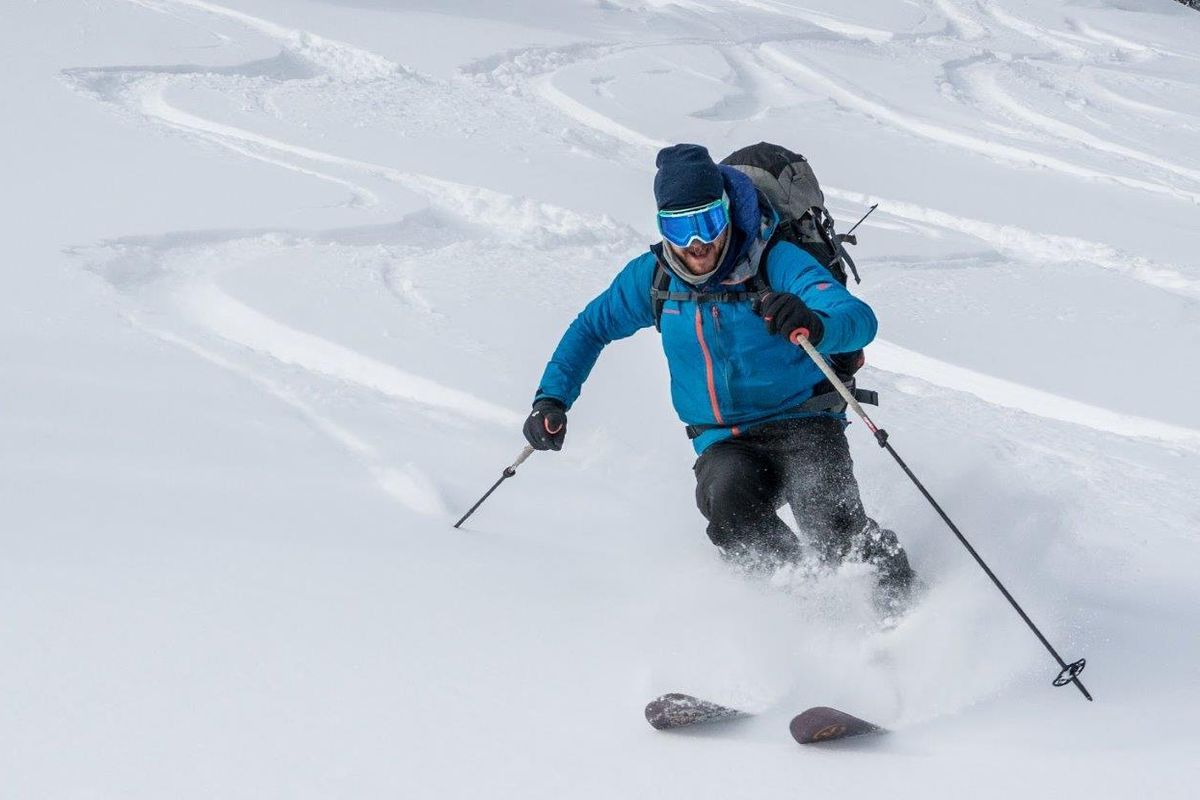Yellowstone guides offer routes to powder for skiers, snowboarders

BILLINGS – Carving turns down snow-covered mountains in Yellowstone National Park is within reach for more skiers and snowboarders thanks to guided trips.
“There’s just some amazing terrain,” said Drew Pogge, owner of Big Sky Backcountry Ski Guides, based in Bozeman.
Pogge’s guiding business expanded from the Tobacco Root Mountains into Yellowstone last winter, targeting areas at the southern end of the Gallatin Canyon as well as the Mammoth, Lamar and Sylvan Pass regions. This season, he began offering overnight camping excursions in the park where a steak dinner after skiing powder makes sleeping in a tent a bit easier.
“My passion is getting into those places” that not many people get to see, especially in winter, Pogge said.
“They’re all beautiful, and the wildlife is awesome.”
New tracks
Years ago, such excursions were isolated to a few hardy telemark skiers, mostly locals. Before that, skiing was often confined to cross country skiing – which still makes up the majority of skier visits to the park.
But paid guides navigating clients on newer lightweight skis, boards and boots – along with much wider powder-specific skis – are making downhill powder-poaching treks more accessible and even a tad bit easier for the recreating public.
One thing hasn’t changed: Even guided clients have to earn their turns by climbing uphill. That’s no easy feat in Yellowstone where trips can start at an elevation of 7,000 feet and climb on the side of peaks that top out at 10,000 feet.
“We’ll ski for an entire day to get to a mountain,” Pogge said.
Trips in the park south of Big Sky Resort are attracting downhill skiers on vacation looking for something different to do for a day.
“We get them hooked, and then they come back to learn more and see more country,” Pogge said.
Other guides
Pogge’s crew isn’t the only one offering guided Yellowstone backcountry ski trips. Beartooth Powder Guides, based in Cooke City, began guiding in 2015 outside Yellowstone and has expanded into the nearby park.
Owner Ben Zavora will lead adventurous, skilled and physically fit clients into areas like Rose Creek drainage, just off the Lamar Valley, to ski the backside of Druid Peak – a mountain famed for its wolf pack and pup-rearing area. Those willing to trek farther can climb into the Pebble Creek drainage and scale the side of Wolverine Peak, a wild spot but just north of the park boundary.
Also based in Cooke City and exploring the park is Yellowstone Ski Tours. The company’s seven guides include Kt Miller, who instructs a three-day women’s-only backcountry ski course.
“Most of our clients are expert skiers who value the experience more than getting wild,” Pogge said. “They’re looking for true adventure.”
Snowy solitude
Chances are guided skiers will have their portion of the park to themselves. Few people trek into Yellowstone’s backcountry in the winter, with good reason.
The average temperature at night between January and March is less than 10 degrees, and in those months the nights are long. Camping in the winter in Yellowstone requires a permit. Years ago, that permit was predicated on campers watching a film that included gruesome photos of frostbite victims’ swollen and black fingers, toes, ears and noses.
The message was blunt: Being unprepared in Yellowstone in winter can be painful, even disfiguring.
Warnings
A newer video posted on the park’s website notes some of the other concerns that winter skiers and snowshoers should bear in mind: deep snow, strong winds, whiteouts, hypothermia and subzero temperatures that can dive to minus 20 degrees or colder.
“Winter in Yellowstone can be unforgiving and unpredictable,” park ranger Bethany Gassman said in the film. “It can be dangerous if you’re unprepared, especially in the backcountry.”
Dealing with even a minor injury or equipment malfunction can “quickly turn into a life-or-death situation,” she advised, so be prepared to self-rescue.
The park also warns that bears can be found wandering in the winter, despite the appeal of hibernation. Other wildlife, such as elk and bison, should also be given a wide berth to keep from burning up their precious calories when fleeing, as well as to keep human travelers safe.
Attraction
Such messages haven’t kept people away, though. Even in the park’s early history, rangers with heavy skis and single, long poles would venture into Yellowstone’s backcountry during winter. The same characteristics that attracted those explorers – vast quiet expanses, a snow-smoothed landscape and chillingly beautiful mountain scenery – are still found in the park.
“It’s a great venue for teaching courses, as well,” Pogge said, educating visitors about everything from avalanches to winter survival and camping.
“We’ve got awesome return customers every year. It’s been a growing community, which is neat.”